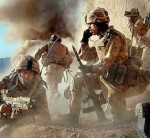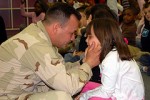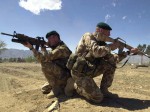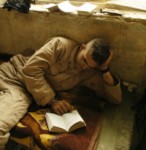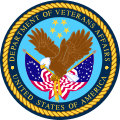“I feel like my heart’s been ripped out of my chest!” and “Damn it Sarge, no one understands me now” is what a young 26 year old Soldier told me a short time ago. He went on to say, “I don’t feel like I belong here anymore…can’t wait to go back to Afghanistan, to where my life has real meaning.” He got his wish. He is now redeployed with the friends he loves more than life itself.
To understand this young Soldier and the hundreds of thousands feeling exactly like him, we first must ask ourselves “Why?”
Many of our Troops have completed their 5th Combat Tour, now waiting for their 6th. To date, they’ve experienced 17 times more combat than anyone in WWII and 10 times more than Vietnam. This translates into 17 times more killing of the enemy, killing women and children, loss of sacred friends, combat rage, combat adrenaline, witness to and/or participation in atrocities (cruelty) and the impact of war itself.
Our young men and women serving this nation in the military today are all volunteers. As Warriors, they stepped up when called, willing to die for what they believe in…what all Americans believe in. And yet, being the elite of our society comes at a very high price.
When you walk off the battlefield your life has changed forever; you have changed forever. Friendship to die for is now your standard, as is living by the Warrior’s Code of Honor. The innocence of youth is gone. And except for fellow Warriors, you stand alone, bearing your pain in silence, taunted by the flashbacks of war and tormented in the dark hours by the phantoms of the dead; both the enemy and brethren. Terrible perhaps, but then again, “It’s just war”. Think about it.
Well over a million Troops now feel abandoned, betrayed and alone; outcasts in the society they fought to defend. To explain the “Whys” of this would take longer than this column allows. And yet, for you to openly consider what they’ve been through, what they’ve seen and done, may perhaps allow you a glimpse into their world.
Then if you dare, open your own heart and ask “What is the just cause, the worthy price of sacrificing someone you love?” and “What can be done to help our children, this nation’s children?” For never in history have so few been asked to give so much for their country.
I am proud to say that New Mexico is a national leader in programs to help our Warriors and their Families. The Warrior Mentor Program, piloted by the New Mexico Military Order of the Purple Heart and the Horses for Heroes, Cowboy Up Programs are two of many making a dramatic difference in this time of great need.
All any Warrior wants is to be loved, to be accepted for who they’ve now become. And who they’ve now become was for “you”, this nation and all they loved, all they are now prepared to die for without hesitation.
No one returns from war un-wounded. It has been said, “No one returns at all”. And if we as a nation choose to send our children to war, then we as a nation must also be responsible to care for them when they return home, if they return home.
For who better to lead this nation into the future, than those Heroes who fought to defend it? They defend the principles upon which this great nation was founded; the liberty and freedom that so many now take for granted. We must allow our young Warriors what they have earned, what they deserve; to welcome them home, in our arms and in our hearts.
Respectfully submitted by:
Sgt. Brandi, United States Marine Corps










